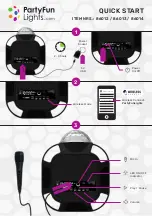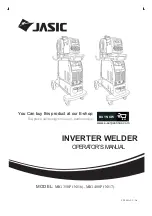
10.0.
TANK CONNECTIONS for SYSTEMS 4
See Quad Rod Color Picture
Installing the “Fireball 2001” Quad Rod Heat Exchanger
VITAL NOTES:
Of vital importance is that Quad Rod Port
“C” be at or below the level of
Pressure/Temperature relief valve (PTRV)
Port “A” so heated water can naturally RISE
into the water tank from Port “C” through
Port “A”.
Quad Rod port “E” must be at or below the
level of Tank Drain port “D.” This allows
cooler water to flow into the large water pipe
which is solar heated by the 4 “double
walled” Glycol tubes going through its
center.
Port “F” at the bottom collects the Glycol
and feeds it on its way past the preinstalled
Glycol Charging Valves, Pump and
Expansion Tank to be heated by the
Collector.
This installation requires a tank with a side
mounted Pressure Relief Valve port that is at
least 36” above the bottom drain valve
and/or may require the tank to be raised and
supported off the floor. Some soldering and
plumbing skill is required.
1)
Drain Storage Tank. The “Quad Rod” is
installed Vertically between the PTRV called Port
“A” and the tank drain valve called Port “D“.
2)
Remove the tank drain and install the bottom
Water Port “D” fitting (Item with Silver Dialectric
Union male end and nipple first, and then attach
female end of silver union with Tee and 1/2 FPT
adaptor onto male end.
3)
Making sure that the Quad Rod is as low as
possible, and that the top Water Port "C" is level to
or (even better) lower than, the Pressure Relief
Valve Port "A" use the necessary fittings and copper
tube (not supplied) to solder the Quad Rod Port Pipe
"E" to Tee on "D". Install the supplied 1/2" male
hose bib in the end of "D" assembly.
4)
Remove the PTRV and install the Port “A”
fitting with Tee with extended fitting to reinstall the
TPRV.
5)
Use the necessary fittings and copper tube
(not supplied) to solder Port “A” to Port ”C” and
reinstall the PTRV in the end of Port “A” fitting.
The Glycol loop Air Bleed Valve, “B1” is used later
to let any remaining air out of the “Propylene
Glycol” charged solar loop.
5)
Install the “Expansion Tank”, pressure gauge
and pump above the charging valves. A brass union
is supplied with the fitting.
The pump plugs into the Differential control or the
optional PV pump is simply connected to the PV
panel wires. Locate the Differential control in a
convenient place. It is often mounted onto the tank.
6)
Connect the Collector feed line to the pump
compression union (CU).
Connect the Collector hot return line to the Glycol
port “B” CU.
Before insulating the lines, pressurize the solar loop
with water and thoroughly test for leaks.
See following sheet for instructions on pressure
testing and Charging the Glycol Loop.
Summary of Contents for Fireball 20014
Page 2: ......




































